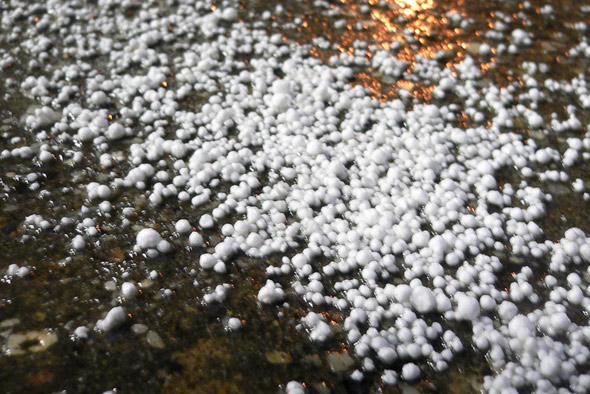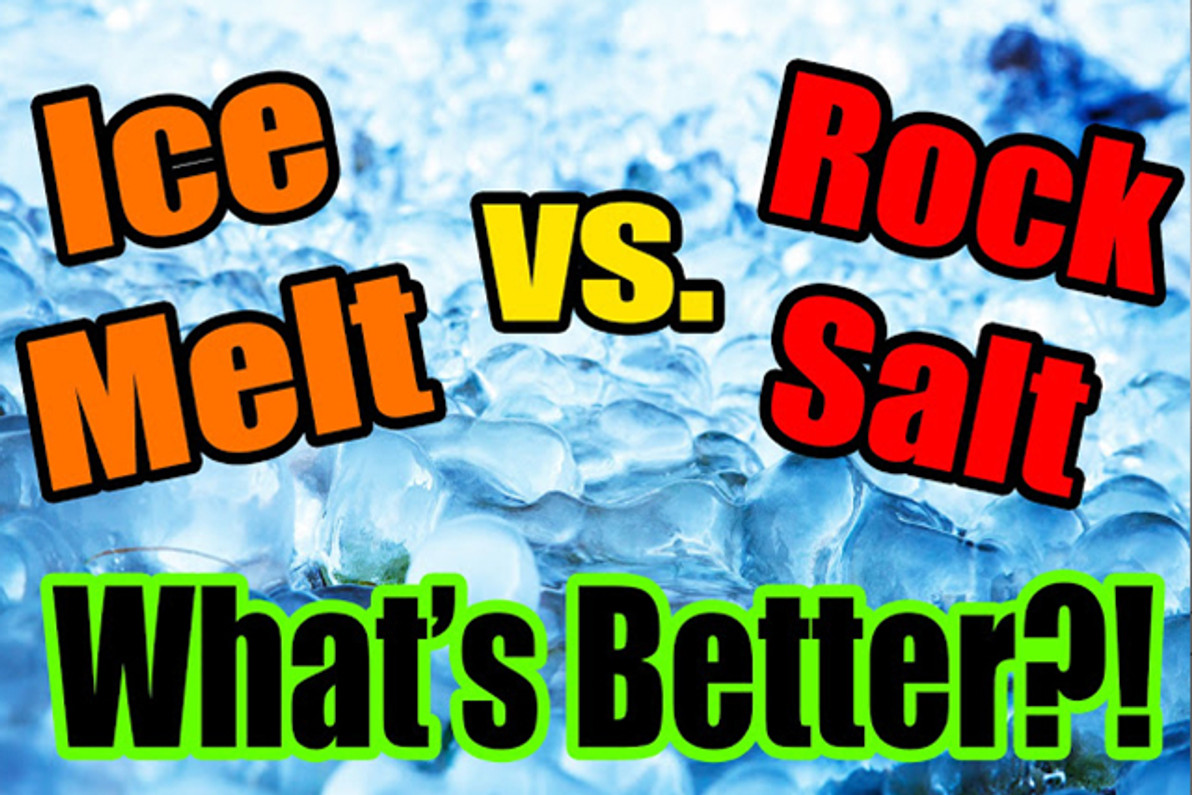Dealing With Ice: Ice Melt vs. Rock Salt?
The Edmonton area has been experiencing a pretty warm winter. Sure, October was very cold and snowy, but November and December (so far) has been warm and mainly above freezing temperatures. The issue this causes is ICE. Everywhere.
The snow comes, it melts, it freezes, and now we're slippin' and slidin' all over parking lots, driveways, sidewalks, and roads. Regardless of the ice, when enough snow gets packed down, it becomes hard and slippery, making it hard to shovel as well. A solution to ice and slippery hard snow is: rock salt and/or ice melt. A question we've gotten a handful of times is...what's better: rock salt or ice melt? Some people think they are the same thing, but they really are not.
Whether it's for residential use or industrial use, it's important to know what you're putting onto the ground. You should base your decision on the outside temperature, any life that may come in contact with it (children and pets), cost, and surface type beneath the ice/snow.
Let's slide right into the discussion by defining what each ice solution actually is:
Ice Melt

Typically, ice melt is a mixture of calcium chloride (CaCl2), sodium chloride (aka salt), magnesium chloride, and sometimes potassium chloride. Different brands use ingredients in different proportions, thus slightly affecting the results you get; however, all ice melt results will be very similar. Calcium chloride is praised for being most effective, as it is fast at melting ice. It also continually melts for a period of time after application, creating long lasting results. Ice melts can reduce the freezing point of ice up to or around -32°C (depending on the brand/blend/etc) making it beneficial in extremely cold temperatures. This is due to ice melts being exothermic and releasing heat on contact. Ice melts can be found in various forms: pet-friendly, safe for children, environmentally-friendly, and some combined, such our special in-house brand Hot Rocks (pet and plant friendly)! Some ice melts are also coated with Calcium Magnesium Acetate (CMA) to make it safer.
Cons
While there are newer and more environmentally friendly ice melt brands on the market, an excessive build-up of certain types of ice melt can be toxic to the environment. While ice melt is an excellent solution to melting ice and snow, it can attract moisture and result in another slippery surface.
Rock Salt

For decades, rock salt was the hottest product on everyone's driveway, parking lot, or sidewalk. Rock salt is basically table salt in mineral form (aka Halite). When the rock salt is applied, it partially melts the ice, creating a brine (salt and water solution) which flows underneath the ice and separates the bond between the ice and the concrete. The great thing about rock salt is that once brine has formed, ice will be prevented from forming in the future, as long as there is enough rock salt present. Rock salt is inexpensive and easy to apply to any ice surface.
Cons
Rock salt loses effectiveness at around -15°C, so unfortunately it does not work in extreme cold temperatures. This is because rock salt is endothermic, so it must pull heat from its surroundings to create brine. Regarding plant and pet-friendliness, rock salt is harmful to vegetation and is not considered plant-safe. Rock salt is also harmful to cats and dogs as it can cause severe burning and irritation if it's caught onto their paws. Pets can also become sick if they eat rock salt. This con can be controlled by knowing where you spread it and that no animals or plants are around the area. Lastly, metals, when exposed to salt, will rust, therefore when vehicles drive over rock salted surfaces repeatedly, there is an increased risk of corrosion on the vehicle.
Comparisons - Which is better?
Both ice melt and rock salt are excellent solutions to slippery surfaces, but the question is... which one is better? Again, this is at the discretion of the user. If you are from an environment that does not experiences extremely cold temperatures, rock salt might benefit you more because it's lower in cost and once applied, prevents more ice from forming, until all the rock salt has left the surface. If you're from an environment with extremely cold temperatures, ice melt would benefit you because it lowers the freezing temperature of ice in extremely cold temperatures. We've created a small list of comparisons for you below:
- Rock salt is better at preventing ice from forming (anti-icer), while ice melt is better at removing existing ice (de-icer)
- Rock salt is cheaper than ice melt
- Ice melt is less damaging to to pavement because calcium chloride has a lower freezing point that slows down the thawing and freezing cycle of ice that damages the pavement below
- Rock salt is harmful to plants and animals while some brands of ice melt create pet and environmentally friendly ice melt
Thank you for checking out our blog. I hope you enjoyed it and it helps you choose the right ice solution for you! If you are in the Edmonton area, we an Open House event on Thursday, Dec 7, 2017. From 7am to 7pm there will be exclusive one-day-only pricing that we've made in partnership with our vendors. It's also a great opportunity to get to know our amazing staff at Edmonton Fasteners & Tools Ltd. Have a great day!
Recent Posts
-
Bissett is Universally Compatible, See Why and How
With Bissett's over 600 fasteners, you're bound to find the perfect fastener for your tool. You're n …2021 Mar 16th -
How To Choose Safety Gloves
We love healthy hands at Edmonton Fasteners. We’re not a skincare shop (clearly) but we do off …2021 Mar 8th -
Three Easy Home Fixes with Gorilla Glue
Gorilla Glue is a household name because of one reason: it works. We carry Gorilla Glue at Edmonton …2021 Feb 2nd




